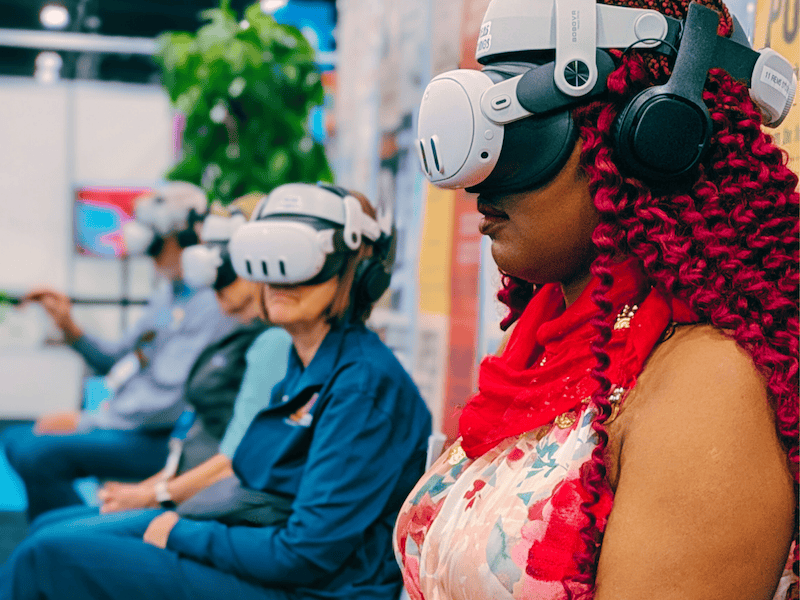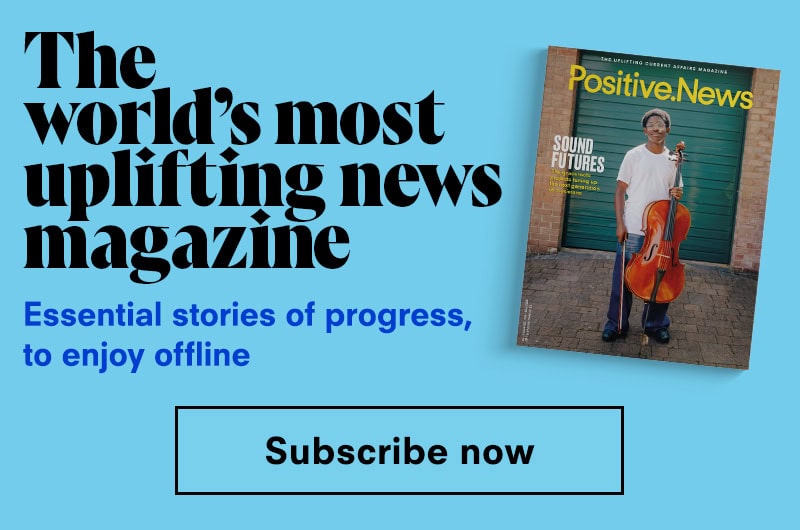A Minnesota company backed by the Gates Foundation is using virtual reality to show how vaccines save lives — from the Congo to classrooms across America. On World Polio Day, the team behind this innovative technology explains why
When Brian Skalak describes his work, he doesn’t talk about computer code or camera rigs. He talks about people – the health workers ferrying boxes of fragile vaccines across flooded roads and rivers in the Democratic Republic of Congo (DRC), the communities waiting in remote villages for protection from polio, and the decision-makers thousands of miles away who finally understand, through virtual reality, what it takes to reach every child.
Skalak is the director of engagement at REM5 STUDIOS, a Minnesota-based production company that’s redefining how global health stories are told. In partnership with the Gates Foundation and other members of the Global Polio Eradication Initiative (GPEI), his team has developed a series of immersive virtual reality (VR) experiences that bring viewers face-to-face with the realities of vaccine delivery.
Their latest project, Apporter La Vie – meaning Delivering Life – takes audiences deep into the DRC, following frontline worker Kasongo as he transports vaccines through sweltering heat, torrential rain, and hundreds of kilometres of inland waterways. It’s a journey few outsiders ever see, yet one that underpins the global mission to eradicate polio and expand immunisation to all children.
“What we’re trying to do is close the distance,” says Skalak. “We bring people there so they can really see what’s happening and why it matters. If you’ve only got ten minutes to show someone what the frontline looks like, VR can create that emotional connection instantly.”
Apporter La Vie builds on the success of REM5’s earlier experience, Polio’s Last Mile, which premiered in 2024 and went on to reach more than 11,000 global health leaders, policymakers, and advocates at over 20 major events worldwide. Together, the two projects form an ongoing effort to use emerging technology as a bridge between the people funding vaccine campaigns and those delivering them.
Filmed using ultra-high-definition immersive cameras, the VR experience allows the viewer to follow Kasongo’s team as they pack vaccine coolers, traverse washed-out roads and rivers, and navigate local customs in their effort to maintain the so-called “cold chain” – the carefully monitored refrigeration process that keeps vaccines viable.
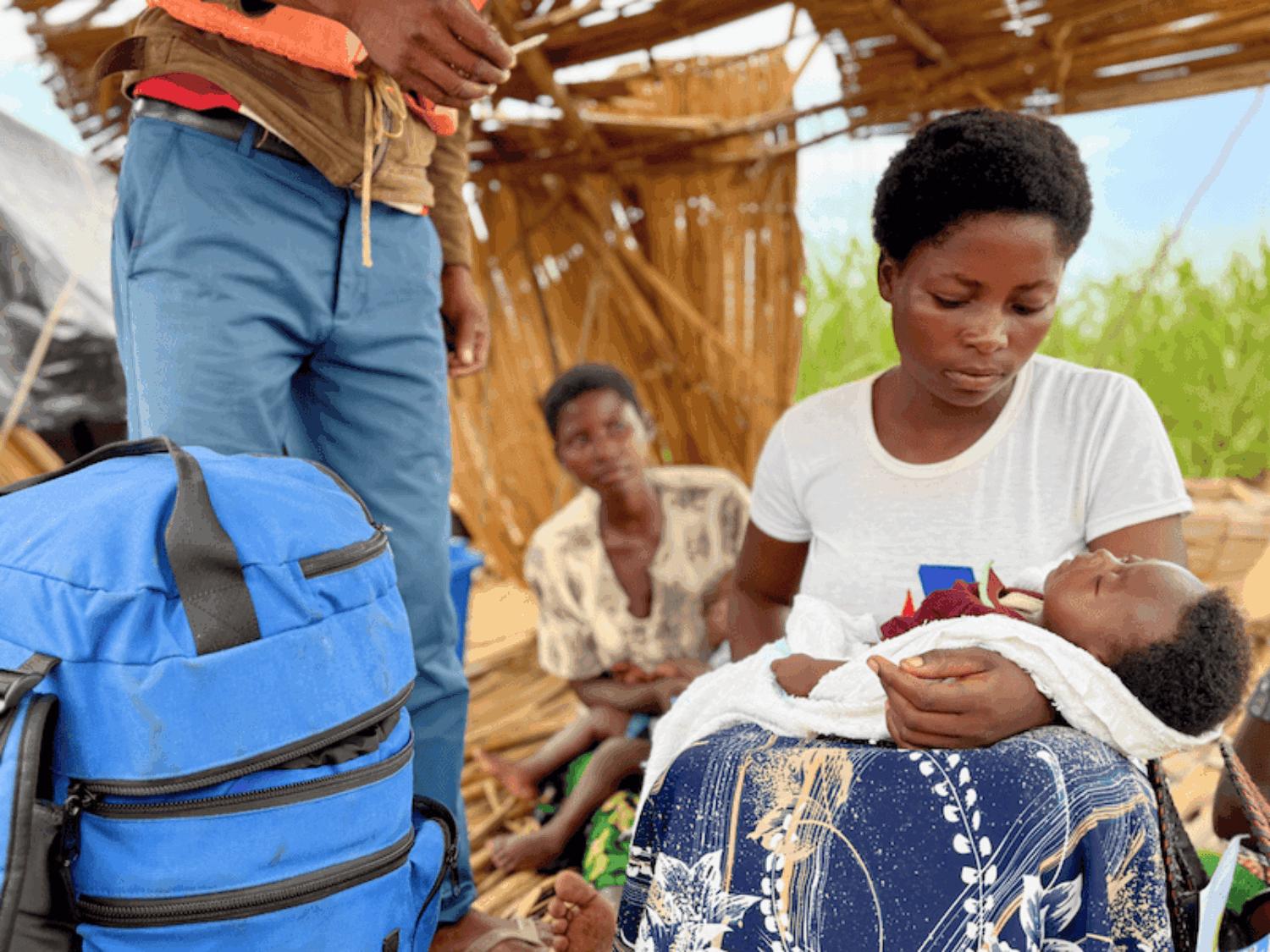
REM5 STUDIOS have partnered with the Gates Foundation and other members of the Global Polio Eradication Initiative (GPEI) to develop a series of immersive virtual reality (VR) experiences that bring viewers face-to-face with the realities of vaccine delivery
In the headset, users can look around freely, hear the sounds of children playing in distant villages, and watch health workers balancing vaccine crates on small wooden boats. “It’s about presence, not novelty,” says REM5’s CEO, Amir Berenjian. “You can read about the polio eradication effort, or watch a video – but in VR, you feel it. You’re right there beside the people doing the work.”
The Gates Foundation, one of the largest funders of vaccine initiatives worldwide, supported both Apporter La Vie and Polio’s Last Mile. Amber Zeddies, the foundation’s Senior Programme Officer for Polio Advocacy and Communications, described the project as “a powerful storytelling tool that restores urgency, proximity and human clarity to a mission that cannot afford to be forgotten”.
The timing is crucial. In the United States, public trust in vaccines has fallen sharply in recent years. Misinformation spread during the pandemic has led to pockets of vaccine hesitancy that threaten not only progress against Covid-19 but also the protection offered by long-standing childhood immunisations.
VR isn’t just about visuals – it’s about empathy. It helps people connect to stories they might otherwise never encounter
For Skalak, that makes the mission of Apporter La Vie more relevant than ever. “In a world where people are increasingly skeptical of science, showing the human impact of vaccines is vital,” he says. “When you see the faces of families in the Congo who walk for hours just to reach a clinic, you understand what’s at stake.”
Until now, REM5’s VR headsets have traveled primarily to global health and policy events – from the Rotary International Convention to the DRC Presidential Forum – where they’ve introduced thousands of first-time users to immersive storytelling. In surveys, 90% of participants reported an increased commitment to immunisation after watching.
But the studio’s next step is to bring that experience closer to home. REM5 STUDIOS, with support from the Gates Foundation, is now making the technology available domestically in the US. Anyone with a headset can download a free app onto their device and can experience the global fight against preventable diseases. Working in community groups, schools and Rotary clubs will help expand that reach.
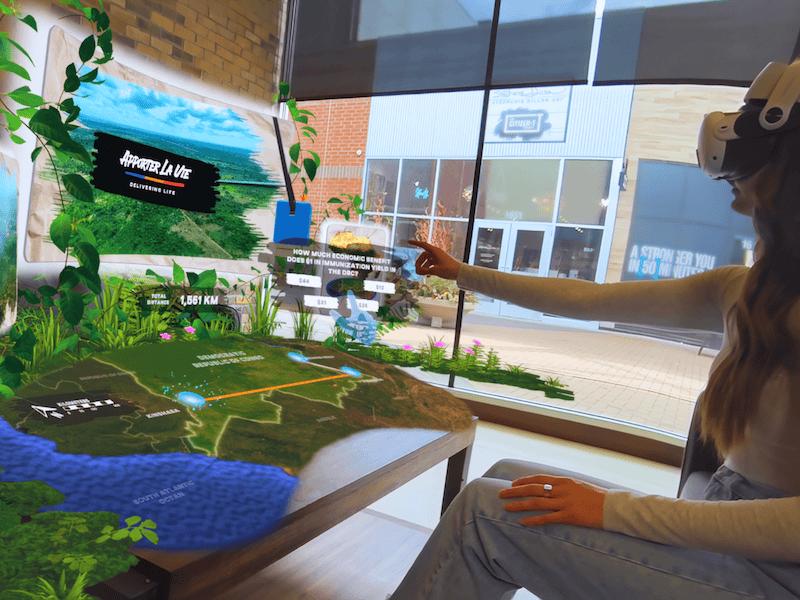
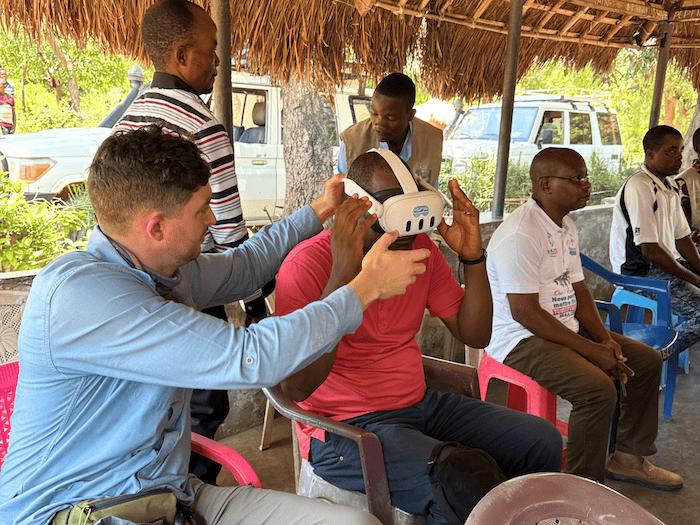
“People think VR is just for gaming,” says Skalak. “But we’re using it for something completely different. We’ve had grandmothers and six-year-olds try it for the first time, and both walk away saying, ‘Now I get it’.”
The Apporter La Vie app is available free to anyone with a Meta Quest 2 or 3 headset, and the team have recently built it out natively for the Apple Vision Pro. They’re also working with educators to build curriculum content around the experience, and in discussion with science museums about potential exhibits.
The response from audiences has been profound. At one Rotary convention, a polio survivor queued twice to experience the VR journey, moved by its portrayal of the effort that continues to protect others from the disease that changed his life. “Those moments remind us why we do this,” says Skalak. “VR isn’t just about visuals – it’s about empathy. It helps people connect to stories they might otherwise never encounter.”
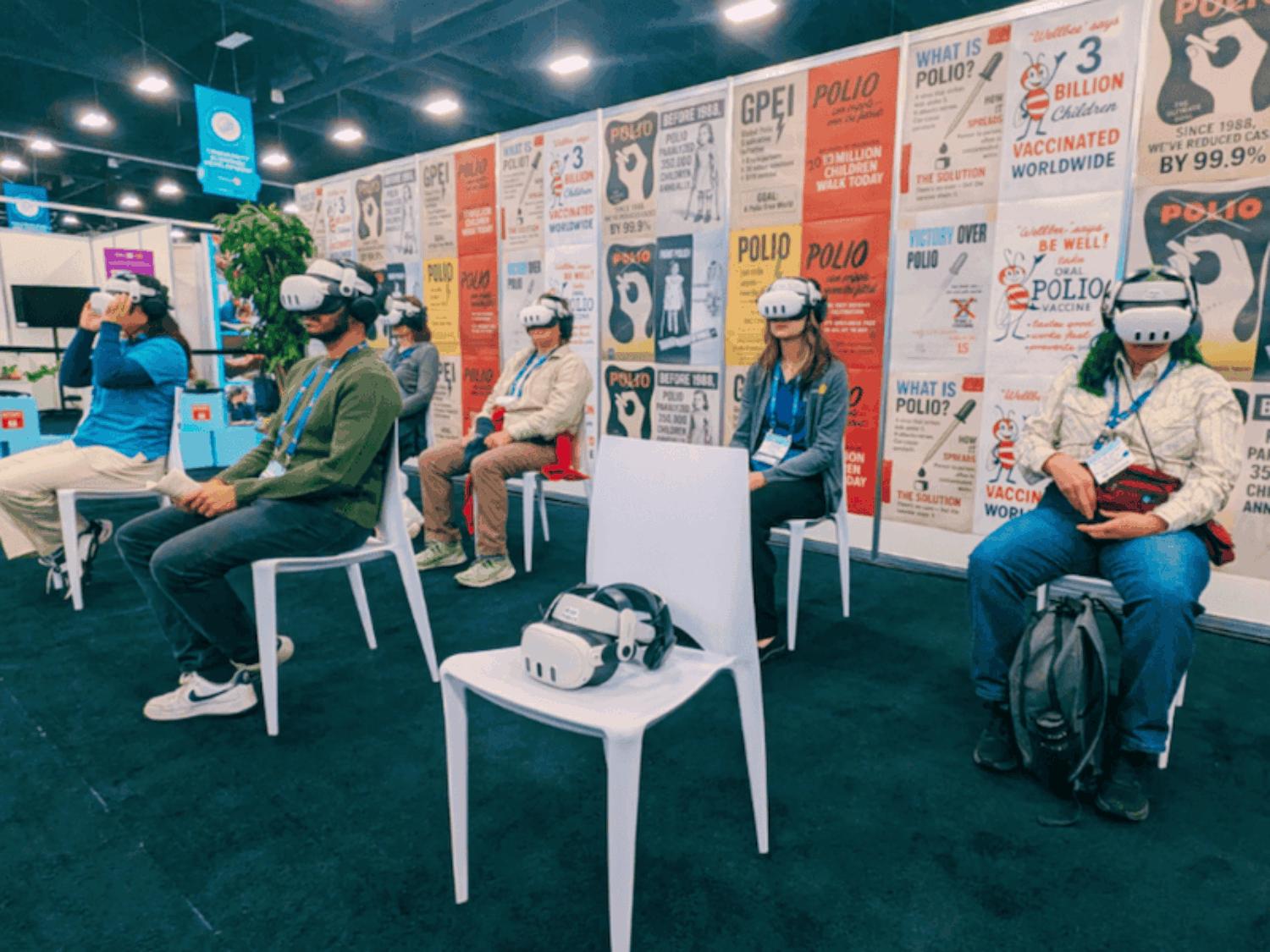
The response from audiences has been profound. One polio survivor queued twice to experience the VR journey, moved by its portrayal of the effort that continues to protect others from the disease that changed his life
That empathy is translating into real-world impact. Saudi Arabia recently pledged $500m to the global polio eradication effort, and while such decisions aren’t driven by a single event, projects like Apporter La Vie play a part in sustaining attention and inspiring action among policymakers and philanthropists.
REM5 is now exploring how the same technology can be applied to other health and humanitarian causes – from cancer awareness with the American Cancer Society to storytelling for the Salvation Army. “It’s the next generation of advocacy,” Skalak says. “If we can show people what’s happening, we can change how they feel – and when you change how people feel, you can change what they do.”
In a time when public debate around science and health has become polarised, REM5’s approach offers something quietly radical: a way to see, rather than be told. The landscapes may be virtual, but the impact is real.
For Skalak, it’s about harnessing technology to remind us of our shared humanity. “We all want healthy kids, strong communities, and a fair shot at life,” he says. “If a headset can help someone understand that vaccines are part of that story, then it’s done its job.”
Photography by REM5 Studios
